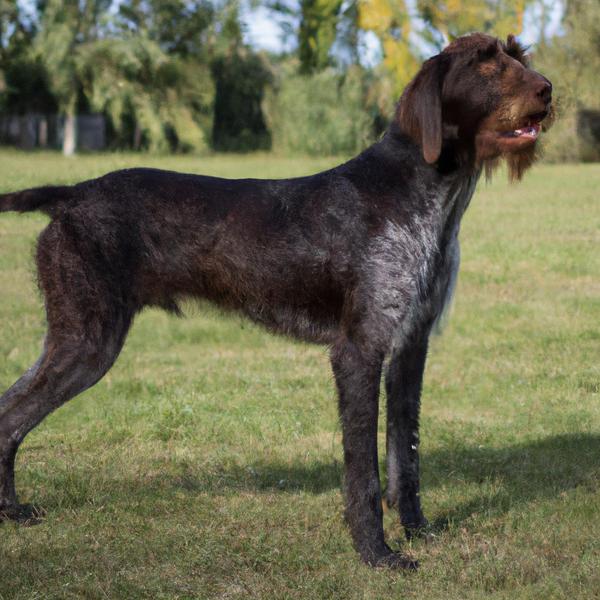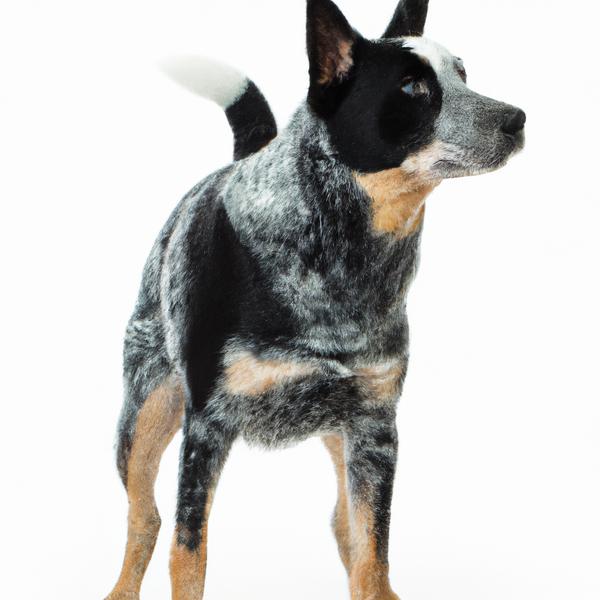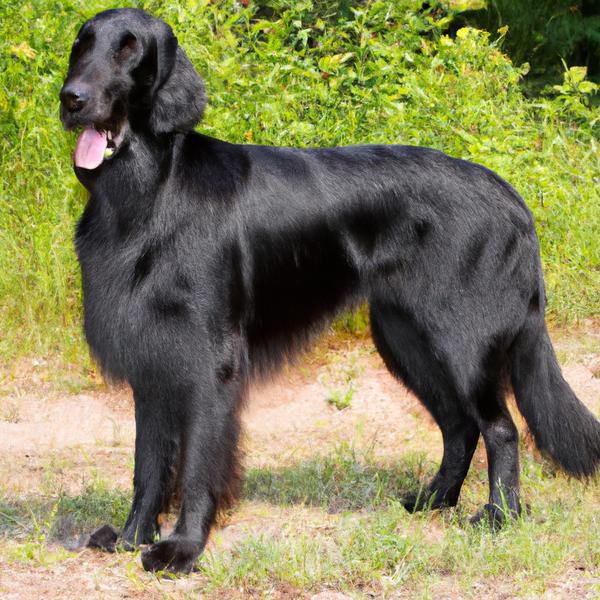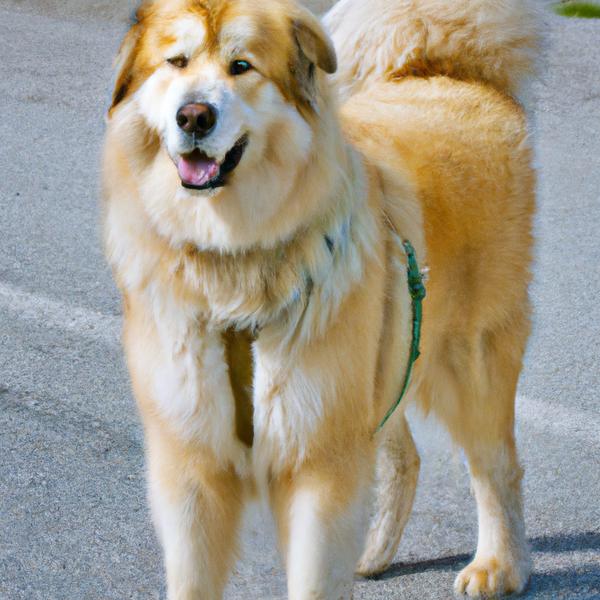Rat-A-Pap vs. Lhaffon: Breed Differences and Similarities
Hypoallergenic
Are Rat-A-Paps or Lhaffons hypoallergenic, or neither?
Unfortunately, neither Rat-A-Pap nor Lhaffon are hypoallergenic, which may not make them the best choice for dog lovers who suffer from pet allergies.
Temperament
What are the personalities of Rat-A-Pap and Lhaffon dogs?
Loving
Happy
Energetic
Alert
Intelligent
Friendly
Affectionate
Lively
Inquisitive
Playful
Alert
Sensitive
Intelligent
Friendly
Obedient
Devoted
Lively
Inquisitive
Steady
Selfish
Watchful
Companionable
Spirited
Assertive
Shedding Level
Do Rat-A-Paps shed more than Lhaffons, or which breed sheds more, Rat-A-Paps or Lhaffons?
Rat-A-Pap or Lhaffon dogs are not heavy shedders, but they will lose a significant amount of hair each year. To decrease the amount of shedding, you can regularly brush your Rat-A-Pap or Lhaffon. This will remove loose hair and keep their coat growing in the same direction.
Watchdog Ability
Which dog breed makes a better watchdog, the Rat-A-Pap or Lhaffon?
Rat-A-Paps are decent watchdogs - they'll alert their owner if something seems amiss.
Avoid Lhaffons as watchdogs - they're not effective.
Origin
What is the origin of Rat-A-Pap and Lhaffon dog breeds?
United States
United States
Ancestry
What are the origins of Rat-A-Pap and Lhaffon breeds?
Papillon, American Rat Terrier
Brussels Griffon, Lhasa Apso
Breed recognition
Which kennel clubs recognize/register Rat-A-Pap and Lhaffon?
ACHC = American Canine Hybrid Club
DDKC = Designer Dogs Kennel Club
IDCR = International Designer Canine Registry®
ACHC = American Canine Hybrid Club
DBR = Designer Breed Registry
DDKC = Designer Dogs Kennel Club
DRA = Dog Registry of America, Inc.
IDCR = International Designer Canine Registry®
Date of Birth
When were Rat-A-Pap and Lhaffon breeds first developed?
Unknown
2000s
Eye Color Possibilites
What are the eye colors of Rat-A-Pap and Lhaffon dogs?
Brown
Brown
Nose Color Possibilites
What are the natural nose colors of Rat-A-Pap and Lhaffon?
Black
Black
Coat Color Possibilites
What are the natural colors of the coat for Rat-A-Pap and Lhaffon breeds?
White
Black
Brown
Red
Fawn
Black
Gray
Brown
Red
Cream
Fawn
White
Sable
Brindle
Coat Length
What is the typical coat length for Rat-A-Pap and Lhaffon breeds?
Rat-A-Paps have medium-length coats.
Lhaffons have longer coats compared to most dogs.
Coat Density
What is the density of the coat of Rat-A-Pap and Lhaffon?
Coat Texture
What is the hair texture of Rat-A-Pap and Lhaffon?
Straight
Litter Size
What is the usual litter size for Rat-A-Pap and Lhaffon?
A Rat-A-Pap can have a litter of 5-7 puppies on average. However, it's worth noting that the size of the litters can vary greatly. Factors that can influence litter size include the health of the mother, breeding history, and genetics.
A Lhaffon can have a litter of 4-6 puppies on average. However, it's worth noting that the size of the litters can vary greatly. Factors that can influence litter size include the health of the mother, breeding history, and genetics.
Adaptability
Rat-A-Pap and Lhaffons are known for their adaptability and versatility. They are capable of adapting well to a wide range of lifestyle changes and living environments, making them great companions for families and individuals of all lifestyles.
Health Issues
Between Rat-A-Pap and Lhaffon, which breed is more prone to health problems?
Rat-A-Pap and Lhaffon breeds are generally considered to be healthy. However, like all breeds, they are susceptible to certain health issues and it is important to keep an eye out for them and address them with your veterinarian as needed.
Major Concerns
What are the major health concerns for Rat-A-Pap and Lhaffon breeds?
Hip Dysplasia
Intervertebral Disc Disease
Brachycephalic Syndrome
Exposure Keratopathy Syndrome
Keratoconjunctivitis Sicca
Minor Concerns
What minor health issues should be kept in mind when owning Rat-A-Pap and Lhaffon?
Patellar Luxation
Cataracts
Glaucoma
Von Willebrand's Disease
Hypothyroidism
Dental Problems
Canine Hip Dysplasia (Chd)
Urolithiasis
Congenital Heart Defect
Occasional Tests
What occasional tests are recommended for Rat-A-Pap and Lhaffon breeds?
Radiographs
Blood Analysis
Blood Sugar and Thyroid Tests
Complete Physical Examination
Cardiac
Eye Examination
Respiratory Tests
Skin Evaluation
Internal Imaging (x-ray, CT scan, MRI, etc.)
Blood And Urine Analysis
Energy
How do the energy levels of Rat-A-Paps and Lhaffons compare?
Rat-A-Paps' high energy levels make them unsuitable for a low-key dog, choose accordingly.
Lhaffons are a good choice for a low-key lifestyle due to their low energy levels.
Social Needs
Rat-A-Pap vs Lhaffon social needs comparison
Rat-A-Pap has very high social needs and requires regular mental and physical stimulation, a job or purpose, and companionship.
Lhaffon has above average social needs and thrives with interaction with humans and other dogs.
Exercise Needed
Rat-A-Pap vs Lhaffon exercise need comparison.
Rat-A-Paps need moderate physical activity and are great for families and active individuals.
Lhaffons need only a small amount of physical activity, ideal for busy or elderly people or those with limited space.
Sleeping Need
Which of the two sleeps the most/least: Rat-A-Pap or Lhaffon?
Rat-A-Paps sleep less than other breeds but still need adequate sleep for good health.
Lhaffons have moderate energy levels and typical sleep patterns of 12-14 hours per day.
Tendency to Bark
Do Rat-A-Paps or Lhaffons bark more/less frequently?
Rat-A-Pap and Lhaffons tend to bark moderately, they bark when necessary, such as to alert their owner or to communicate something. They may also bark due to certain triggers like fear, alarm, boredom, greeting, separation anxiety and compulsive barking.
Mouthiness
Mouthiness Comparison: Rat-A-Pap vs Lhaffon?
Roaming urge
Rat-A-Pap vs Labrador: Running away tendency?
Prey Drive
Rat-A-Pap or Lhaffon - which breed has a higher level of prey drive?
Activity Level
Which breed has higher energy, Rat-A-Paps or Lhaffons?
Rat-A-Paps are high-energy dogs. They need mental as well as physical exercise. These dogs require a lot of your involvement and without it they can, and will, become problematic dogs.
Lhaffons are low-energy dogs. This breed make a great companion for a relatively inactive person. Lhaffon dogs require a few short daily walks, and then they're happy snuggling next to you for the rest of the day.
Tolerance of being left alone
Walks per Week
How many miles should Rat-A-Pap or Lhaffon walk each week?
There's really no limit to how far you walk your dog as long as they're comfortable. For Rat-A-Pap, it's at least 10 miles / week. Just remember to build distance and stamina gradually over time.
There's really no limit to how far you walk your dog as long as they're comfortable. For Lhaffon, it's at least 4 miles / week. Just remember to build distance and stamina gradually over time.
Activity per Day
Do Rat-A-Paps or Lhaffons require more exercise?
In general most Rat-A-Paps usually need at least 60 minutes of exercise daily. This can be spread across the day and include all sorts of high-energy activities, like walking, running and playing.
In general most Lhaffons usually need at least 30 minutes of exercise daily. This can be spread across the day and include all sorts of high-energy activities, like walking, running and playing.
Grooming
Which breed is easier to maintain in terms of grooming, Rat-A-Paps or Lhaffons?
The Rat-A-Pap has low grooming needs and is easy to maintain.
Lhaffons have high grooming needs, requiring regular trims and professional grooming assistance to keep their coat healthy.
Brushing Frequency
What is the recommended brushing frequency for Rat-A-Pap and Lhaffon dogs?
Rat-A-Pap should be brushed at least once a week. Of course you can give them more frequent brushes if you find that they are still shedding a lot
Ideally, Lhaffon should be brushed at least 2 or 3 times a week (preferably daily) improve shedding.
Brushing Tools
What brushing tools are used for Rat-A-Paps and Lhaffons?
Pin Brush
Slicker Brush
Nail Clipper
Pin Brush
Dematter
Comb
Nail Clipper
Cups
How much food should be given to Rat-A-Pap or Lhaffon in cups?
Rat-A-Pap and Lhaffon share the same recommended daily food intake of 1 cups, although the appropriate quantity may vary depending on the quality and nutritional content of their food.
Daily Cost
Which breed has a higher daily cost, Rat-A-Pap or Lhaffon?
The average cost of a Rat-A-Pap is somewhere $1.40 - $1.70 per day.
The average cost of a Lhaffon is somewhere $1.10 - $1.40 per day.
Monthly Cost
Which breed has a higher monthly cost, Rat-A-Pap or Lhaffon?
The average per month expenses of a Rat-A-Pap is between $35 - $42. This makes an average of $420 - $504 per year. It will be on the higher side when the dog is still small because it will need more frequent visits to the vet, shots.
The average per month expenses of a Lhaffon is between $28 - $42. This makes an average of $336 - $504 per year. It will be on the higher side when the dog is still small because it will need more frequent visits to the vet, shots.
Intelligence
Comparing Intelligence: Rat-A-Paps vs Lhaffons
Rat-A-Pap is a very intelligent and trainable breed.
Lhaffon is an independent and stubborn breed with low obedience intelligence, making training a test of patience.
Sensitivity Level
How do Rat-A-Pap and Lhaffon compare in sensitivity?
This breed is sensitive and requires gentle handling and a calm home environment.
This breed is sensitive to its environment and best suited for patient and understanding families with a consistent routine.
Affection Dependance
Which is the more affectionate dog breed: Rat-A-Pap vs Lhaffon?
Apartment Friendly
Which breed is more apartment-friendly: Rat-A-Pap or Lhaffon?
The Rat-A-Pap is a great apartment dog, thriving with sufficient exercise and time outside as part of their daily routine.
Lhaffons make excellent apartment dogs, being fairly active indoors and not requiring a yard.
Child Friendly
Do Rat-A-Paps or Lhaffons have a friendlier temperament towards children?
Rat-A-Paps make excellent family pets for kids due to their gentle, protective nature and calm temperament.
Lhaffons have an average level of friendliness towards children.
Senior-friendly
Which dog is more suitable as a pet for the elderly - Rat-A-Pap or Lhaffon?
Cat Friendly
Do Rat-A-Pap or Lhaffon breeds have a better compatibility with cats?
Rat-A-Paps and Lhaffons are very cat friendly dogs. They generally make good companions for cats.
Dog Friendly
Which breed is more sociable with other dogs: Rat-A-Pap or Lhaffon?
Rat-A-Paps are average in their friendliness towards other dogs, and socialization can help.
Lhaffons are friendly and active companions, and can be good family pets, though their friendliness towards other dogs may vary.
Pet friendly
How do Rat-A-Pap or Lhaffon dogs interact with other pets?
Stranger Friendly
Which breed is more friendly with strangers: Rat-A-Pap or Lhaffon?
Rat-A-Paps are highly friendly around strangers.
Lhaffons are averagely friendly around strangers but benefit from early socialisation.
Playfulness
Which breed is more playful between Rat-A-Pap and Lhaffon?
Rat-A-Paps are a playful breed that needs daily playtime to be happy.
Lhaffons have an average level of playfulness, enjoying playtime like most dogs but not excessively so.
Trainability
How do the trainability levels of Rat-A-Paps and Lhaffons compare?
Rat-A-Paps are popular for their ease of training and quick learning ability.
Lhaffons may require more time and patience to learn commands, but with consistency, they can be trained.
Compare Rat-A-Pap with other breeds

German Wirehaired Pointer
Rat-A-Pap vs German Wirehaired Pointer

Pom-Shi
Rat-A-Pap vs Pom-Shi

Dunker
Rat-A-Pap vs Dunker

Siberian Shiba
Rat-A-Pap vs Siberian Shiba

Border Heeler
Rat-A-Pap vs Border Heeler

Siberian Pinscher
Rat-A-Pap vs Siberian Pinscher

Transylvizsla Hound
Rat-A-Pap vs Transylvizsla Hound

Flat-Coated Retriever
Rat-A-Pap vs Flat-Coated Retriever

Alaskan Goldenmute
Rat-A-Pap vs Alaskan Goldenmute

Powderpap
Rat-A-Pap vs Powderpap

Bully-Tzu
Rat-A-Pap vs Bully-Tzu

Lhaffon
Rat-A-Pap vs Lhaffon
